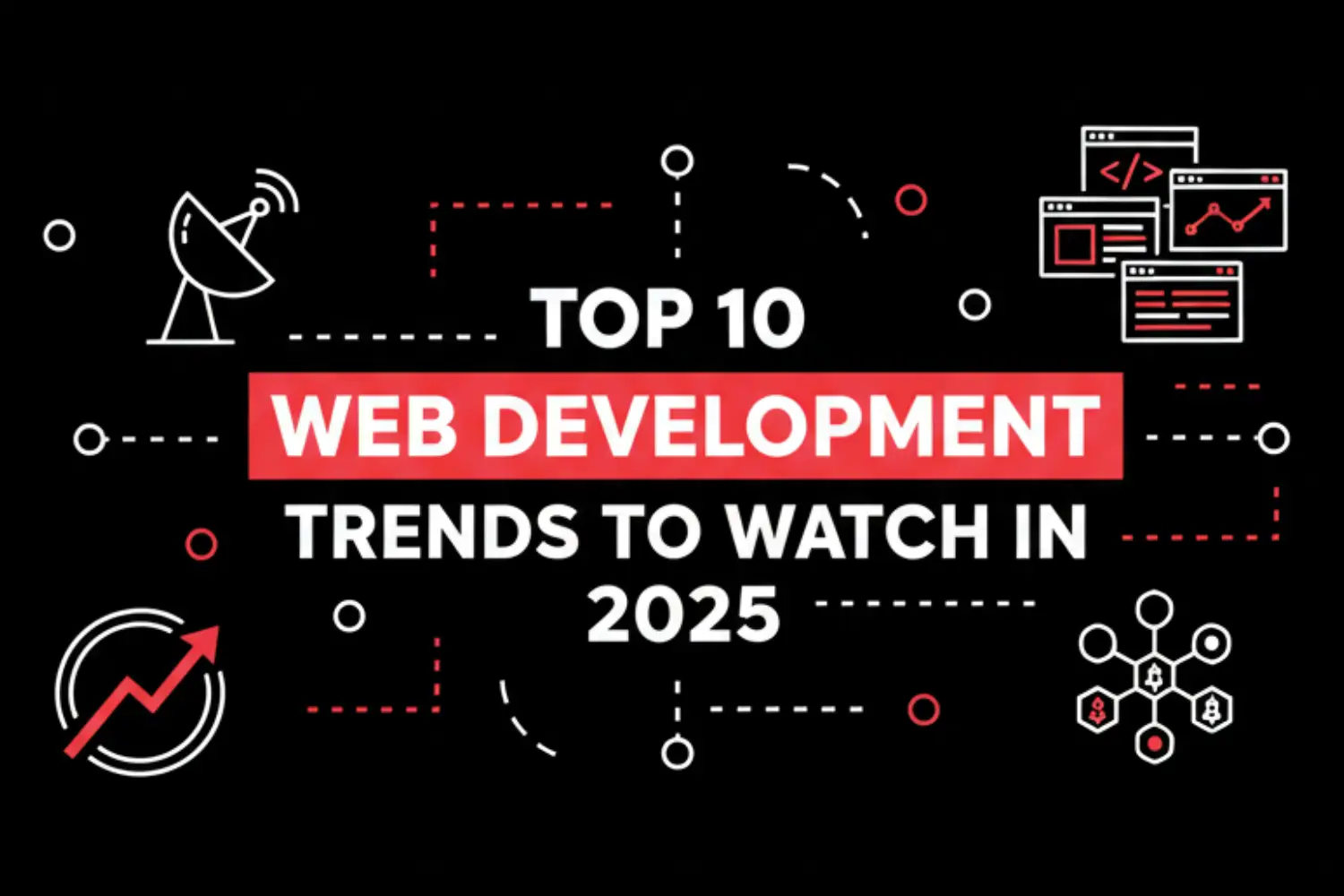
Top 10 Web Development Trends to Watch in 2025
The world of web development is evolving faster than ever. Businesses, developers, and digital marketers are constantly seeking new ways to improve website performance, user experience, and engagement. As we move into 2025, it is crucial to stay ahead of emerging technologies and trends to remain competitive in the digital landscape. From AI-powered development to eco-friendly web design, the next wave of web trends promises to transform how we create and interact with websites. This article explores the top 10 web development trends to watch in 2025, highlighting tools, techniques, and examples for each trend.
Read more about our Web Development Services that will help you grow your online presence and elevate your brand to the next level.
Table of Contents
- 1. AI-Powered Development
- 2. Progressive Web Apps (PWAs)
- 3. Low-Code and No-Code Platforms
- 4. Headless CMS
- 5. Voice Search Optimization
- 6. Motion UI and Micro-Interactions
- 7. Serverless Architecture
- 8. Cybersecurity and Data Privacy
- 9. API-First Development
- 10. Sustainability in Web Design
- Conclusion
1. AI-Powered Development
Artificial intelligence (AI) is no longer a futuristic concept; it has become a practical tool for web developers. AI can automate repetitive coding tasks, suggest improvements, and even debug code efficiently. Tools like GitHub Copilot and OpenAI Codex allow developers to write code faster and with fewer errors. Additionally, AI-driven analytics can personalize user experiences by predicting behavior, showing relevant content, or suggesting products. For example, e-commerce sites like Amazon use AI to recommend products, improving engagement and conversion rates.
2. Progressive Web Apps (PWAs)
PWAs combine the best of web and mobile apps, offering a seamless, app-like experience without requiring downloads. They are fast, reliable, and work offline. Companies like Starbucks and Twitter have implemented PWAs to enhance user engagement and reduce bounce rates. With increasing mobile traffic worldwide, PWAs are becoming essential for businesses seeking optimized experiences.
3. Low-Code and No-Code Platforms
Low-code/no-code platforms democratize web development. Platforms like Webflow, Bubble, and Wix allow businesses to create sophisticated websites without extensive coding knowledge. They speed up development, reduce costs, and enable rapid prototyping, helping startups launch products quickly and efficiently.
4. Headless CMS
Headless CMS separates content from presentation, allowing publishing across multiple platforms. Systems like Strapi, Contentful, and Sanity deliver content via APIs, making it easier to maintain consistent branding and scalability. Developers can also use modern frameworks like React or Vue.js to build fast, interactive websites.
5. Voice Search Optimization
Voice search is changing how users interact with the web. Smart speakers and AI assistants require websites to use conversational keywords. For guidance, see Google’s Voice Search Optimization Tips. Structured data, FAQs, and long-tail keywords can improve voice search rankings.
6. Motion UI and Micro-Interactions
Motion UI, including hover effects and animated buttons, enhances user engagement. Interactive designs guide users, provide feedback, and improve satisfaction. Companies like Airbnb implement subtle animations to make navigation intuitive and engaging.
7. Serverless Architecture
Serverless computing allows developers to focus on code while platforms manage infrastructure. Solutions like AWS Lambda, Google Cloud Functions, and Azure Functions reduce costs, improve scalability, and accelerate development.
8. Cybersecurity and Data Privacy
With rising cyber threats, developers must prioritize security. Implement HTTPS, secure coding practices, and data encryption. For best practices, see OWASP Web Security Guidelines. Ensuring security builds user trust and compliance with regulations like GDPR.
9. API-First Development
API-first development emphasizes building robust APIs for seamless integration. APIs allow connections between apps, services, and platforms. Learn more about API-first strategies at ProgrammableWeb. This approach supports scalability and faster feature deployment.
10. Sustainability in Web Design
Eco-friendly web design is gaining traction. Lightweight websites, optimized images, and minimalistic designs reduce energy consumption. Examples like Ecosia demonstrate how sustainability can align with user experience and brand values.
Conclusion
The web development landscape in 2025 is defined by innovation, flexibility, and user-centered design. Trends such as AI-powered development, PWAs, low-code platforms, and sustainability are reshaping how websites are built and maintained. Businesses that adopt these trends will not only improve user experience but also gain a competitive edge in the digital marketplace. Staying informed and proactive in web development practices ensures long-term success, higher engagement, and better ROI.
Contact us for more info or to book an appointment. Don’t forget to leave us a review.





